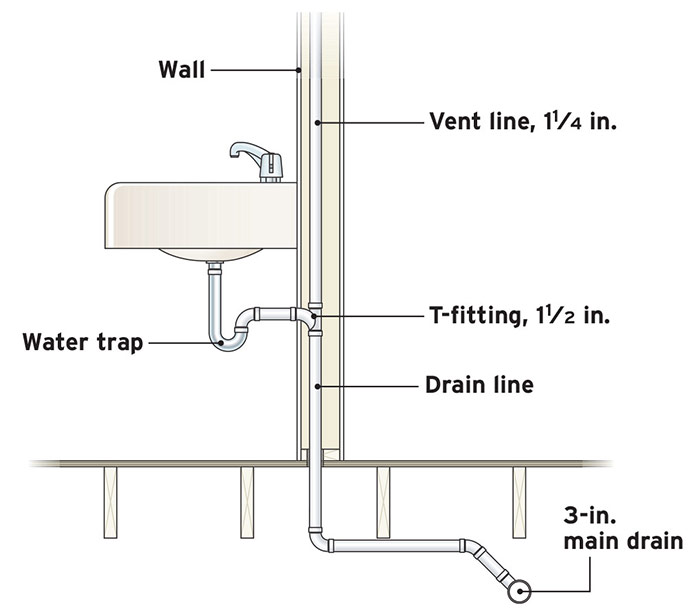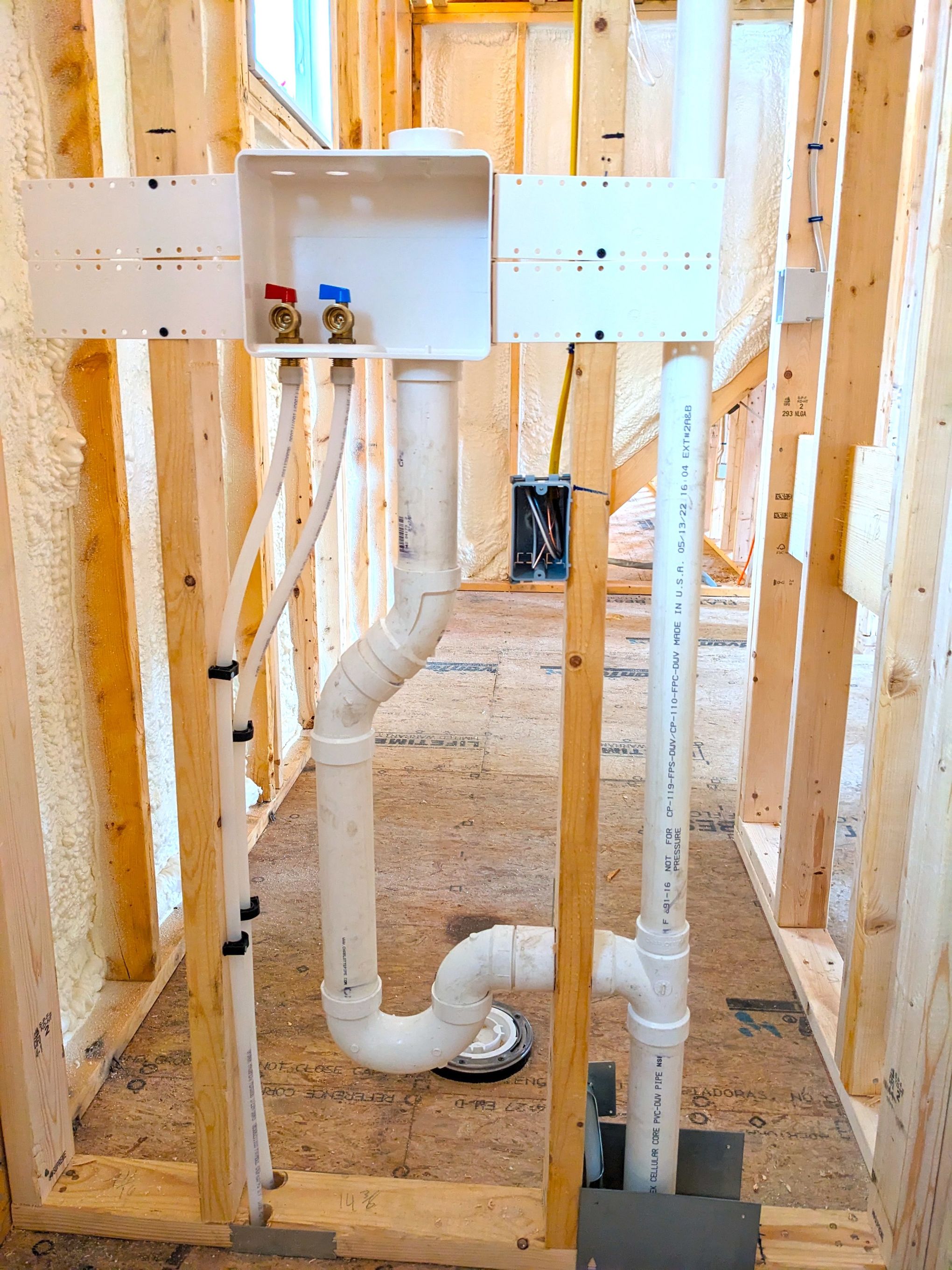Essential Reasons for Proper Ventilation in Plumbing Systems
Essential Reasons for Proper Ventilation in Plumbing Systems
Blog Article
This post further down pertaining to What Are Plumbing Vents and Why Are They Important? is quite engaging. Check it out for yourself and see what you think of it.

Correct air flow in pipes systems is frequently overlooked, yet it is important for preserving the capability and safety and security of your home's pipes. Air flow aids manage atmospheric pressure, avoid the accumulation of damaging gases, and ensure the reliable elimination of waste. In this overview, we will explore the relevance of appropriate pipes air flow, exactly how it works, and the advantages it gives your pipes system.
Comprehending Ventilation in Pipes
Air flow in plumbing refers to the network of pipelines that permit air to move with the water drainage system. These vents offer numerous functions, consisting of regulating air pressure within the pipes, preventing sewer gases from going into the home, and helping in the smooth circulation of wastewater.
Just How Ventilation Functions in Plumbing Solutions
Air Pressure Policy
Proper air flow preserves well balanced air pressure within the pipes system. When water streams through pipelines, it displaces air. Without appropriate air flow, this variation can create negative pressure, leading to slow down drains or siphoning of water from catches, which can create undesirable odors to seep into the home.
Preventing Drain Gas Accumulation
One of the most essential functions of pipes vents is to avoid sewage system gases, such as methane and hydrogen sulfide, from building up within the home. These gases can position serious wellness dangers and are extremely flammable. Vent pipelines permit these gases to escape safely outside.
Assisting in Waste Removal
Air flow assists in the reliable elimination of wastewater by protecting against airlocks in the drainage system. When air can move easily via the vents, it allows water and waste to flow smoothly via the pipes, decreasing the danger of clogs and back-ups.
Types of Plumbing Vents
Main Heap Vent
The major stack vent, additionally called the vent stack, is the main vent in a pipes system. It expands from the primary drainpipe align via the roofing system, enabling gases to run away and fresh air to enter the system.
Branch Vent
Branch vents link to the major stack vent and serve specific fixtures, such as sinks, commodes, and showers. These vents guarantee that each component has sufficient ventilation to function correctly.
Air Admission Valve (AAV).
An Air Admission Valve (AAV) is a one-way shutoff that enables air to go into the pipes system without the demand for a conventional vent pipe expanding with the roof covering. AAVs are typically utilized in restorations or areas where setting up a standard vent is impractical.
Signs of Poor Air Flow in Plumbing.
Slow Draining Fixtures.
If your sinks, tubs, or toilets are draining pipes gradually, it could be an indicator of poor ventilation. Poor air flow can create a vacuum cleaner result, making it tough for water to drain correctly.
Gurgling Sounds.
Gurgling noises originating from drains pipes are typically an outcome of air being drawn via water traps because of adverse stress in the pipelines. This is a clear sign of inadequate air flow.
Unpleasant Odors.
Drain odors inside your home are a red flag that your plumbing system is not properly aerated. This can suggest that sewage system gases are not being appropriately vented outside, bring about possibly unsafe problems.
Typical Ventilation Errors.
Inadequate Vent Sizing.
Making use of small vent pipes can result in inadequate air circulation and stress imbalances in the system. It's essential to make use of vents that fulfill the particular demands of your pipes system.
Improper Vent Positioning.
Putting vents as well much from the fixtures they offer can lower their performance. Correct positioning ensures that air can stream freely and effectively through the system.
Ignoring Code Demands.
Building codes supply particular standards for plumbing ventilation. Disregarding these codes can cause a system that fails to operate correctly and may cause costly repair work or carcinogen.
Advantages of Appropriate Ventilation.
Enhanced System Efficiency.
Correctly aerated pipes systems run extra successfully, with less obstructions, faster draining, and less stress on the pipes. This performance extends the life-span of the pipes system.
Improved Air High Quality.
By stopping sewer gases from entering your home, correct ventilation adds to better indoor air high quality, making your living environment healthier and much more comfortable.
Preventing Water Damage.
Sufficient air flow assists prevent water from being siphoned out of catches, which can lead to drain gases going into the home and triggering water damages gradually.
Actions to Make Certain Proper Air Flow.
Consulting Pipes Codes.
Always get in touch with local pipes codes when making or changing your plumbing system. These codes supply the essential standards for proper airing vent and guarantee your system meets security standards.
Regular Assessment and Maintenance.
Regular inspections can assist recognize prospective ventilation issues before they end up being major troubles. Upkeep jobs, such as cleansing vent pipes and looking for blockages, are crucial for keeping the system in good working order.
Specialist Installation.
For brand-new installments or significant alterations, it's wise to hire a professional plumbing. They have the expertise to ensure the air flow system is appropriately designed and installed according to code.
Final thought.
Appropriate ventilation is a crucial component of any plumbing system, making sure that it works successfully and securely. By comprehending the relevance of air flow, identifying the signs of bad ventilation, and taking actions to preserve your system, you can stop pricey issues and safeguard your home's air top quality.
4 Things You Should Know About Your Plumbing Vents
What Plumbing Vents Are
Also called a vent stack, a plumbing vent is a vertical pipe attached to your drain line that runs through your roof. The plumbing vent pipe, or plumbing air vent, removes gas and odors from your plumbing system and allows fresh air to enter the pipes, helping the water to flow out of the drain pipes.
What Plumbing Vents Do
Plumbing vents have two basic functions. One of which is to allow unpleasant smelling wastewater and sewer gasses to escape your plumbing system instead of entering your home. Plumbing vent pipes are typically located on roofs, away from windows, to ensure the fumes exit the home completely.
The other function of the plumbing vent is to move fresh air into your plumbing system. This helps move water through every plumbing fixture in your house, like toilets and sink drains. Think of the way in which you need to let a little air into the bottle as you pour soda in order to make the drink flow smoothly.
Different Types of Plumbing Vents
True vent: This is the most common vent option. In simplest terms, a true vent is a vertical pipe attached to your drain line that exits through the roof. They often function as the main vent that other fixtures can connect to. Re-vent pipe or auxiliary vent: Attached to the drain line near specific plumbing fixtures, re-vent pipes run up and over to connect to the main vent. Common vent: Two plumbing fixtures installed on opposite sides of a wall are typically tied into the vent stack using something known as a sanitary cross. Wet vent: This venting option operates as a drain pipe and a vent at the same time. Wet vent drainage systems drain water from one fixture while venting the air from another. Although they’ve been used for over 100 years, wet vent systems have only recently been added to the plumbing code in many areas. If you’re planning on installing one in a bathroom remodel, make sure you check your local code prior to construction. Loop vent: For free-standing fixtures like kitchen island sinks, loop vents are ideal. These vent pipes run under the floor, rise from the P-trap, and create a loop inside the cabinet sink. Air admittance valve: An AAV is a one-way mechanical valve typically installed at the site of the plumbing fixture. AAVs allow venting to occur without having to tie into a larger venting system. They’re ideal for venting fixtures where you aren’t able to easily connect to an existing vent system. Common Plumbing Vent Issues
Although vent pipes typically don’t have water flowing through them, they’re still subject to many typical plumbing issues. For example, clogs are one of the most common problems associated with sewer vent pipes. If your vent pipe gets clogged, all of your plumbing fixtures tied into the vent stack will be affected.
A sink with a slow drain that bubbles and gurgles or a strong sewage smell around your toilet are both indicators that your toilet vent pipe is clogged. Because most vent pipes exit through the roof, old leaves, twigs or even a bird’s nest could be clogging the pipe.
Clogs in your vent pipe system cause a buildup of negative pressure, meaning that water won’t be able to flow out of your home very well. It’s similar to putting your finger over the opening of a straw to trap water inside. When you remove your finger, the water is able to flow out of the straw.
If you suspect you have any blockage in your vent, make sure you have a professional come examine the situation. Left unchecked, a blocked air vent can lead to other costly repairs, like leaks and sediment buildup.
Under Pressure
Pipe vents are essential aspects of a home’s plumbing system. Owning a home means learning about all sorts of things you never put much thought into before. But by understanding as much as you can about the important systems of your home, you can keep those budgets intact and those anxiety levels low.
https://www.homeserve.com/en-us/blog/home-improvement/plumbing-vents/

As a fervent reader about What Is a Plumbing Vent and Why Is It Important, I was thinking sharing that piece of content was a good thing. Are you aware of anybody else who is interested by the niche? Take a moment to share it. Many thanks for your time spent reading it.
Free Estimate Report this page